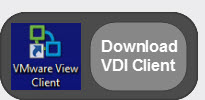Topic outline
-
UniSA's Virtual Desktop Infrastructure (VDI) allows staff and students to securely access a 'virtual' Windows desktop from on or off campus using a number of devices, such as University and home PCs, laptops, and non-Windows devices.
Connecting to a UniSA virtual desktop allows your local device to access the software applications installed on the virtual desktop. This means you can access expensive and powerful applications related to your studies from your personal device, without the expense of purchasing the required software, licences, and performance upgrades your device might otherwise require. More
Important Note: A 'VDI Client' (VMware View Client) must be downloaded and installed to enable a device to connect to UniSA virtual desktops. For a demonstration of UniSA's Virtual Desktop Infrastructure, please watch the
'Overview of the Virtual Desktop Infrastructure' online video.The 'VDI Client' (VMware View Client) must be downloaded
and installed to enable a device to connect to UniSA virtual desktops. This is a 'one-off' process per device.To install the VDI Client select the adjacent
Download button and follow the prompts in
the VMware installation wizard.For further information, a demonstration, and instructions
detailing how to download the VDI Client, select one of the buttons below.
Online Video
(mp4 13333KB)
User Guide
(pdf 772KB)
Frequently Asked QuestionsTo access a UniSA virtual desktop, use the VDI Client to connect to the Connection Server, enter your UniSA credentials, and select the VDI Pool supplied by your Course Coordinator.
When finished using the application(s) you can only access via VDI you should immediately disconnect from the virtual desktop to make it available to other staff and students.
For further information, a demonstration, and instructions
detailing how to connect to, use, and disconnect from UniSA virtual desktops, select one of the buttons below.
Online Video
(mp4 3986KB)
User Guide
(pdf 455KB)
Frequently Asked Question








